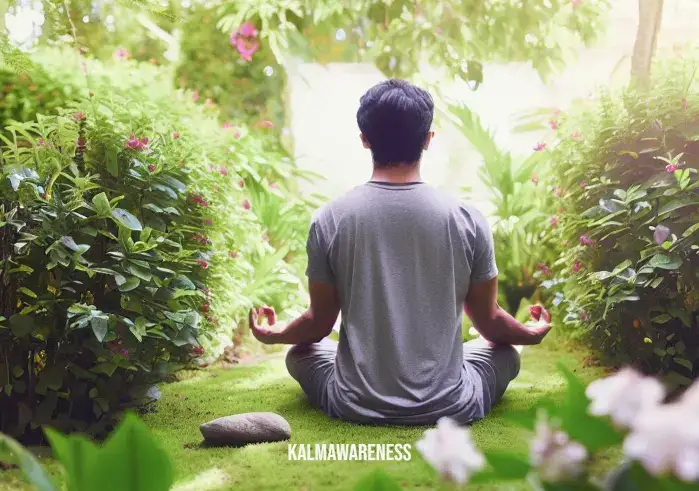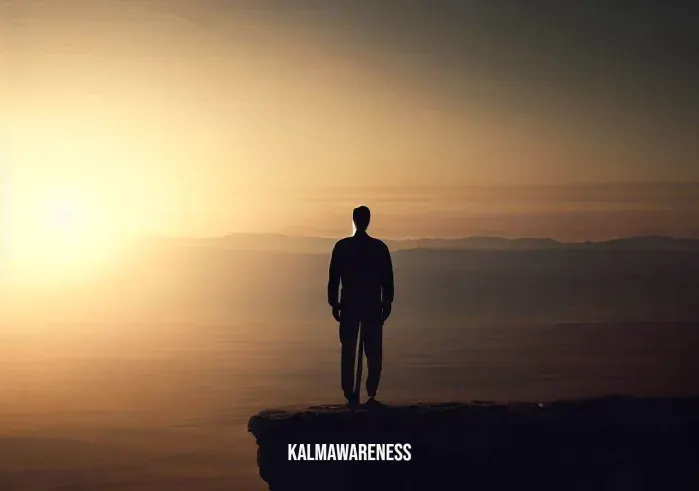The Art of Meditation: Enhancing Your Practice
Introduction
The practice of meditation has gained immense popularity in recent years as people seek solace and inner peace in the midst of their busy lives. In this article, we will delve into the world of meditation, exploring its various techniques, benefits, and how it can transform your daily routine. Whether you’re a beginner or an experienced practitioner, understanding the nuances of meditation and its practice can elevate your experience and unlock its full potential. So, let’s embark on this enlightening journey together.
The Essence of Meditation
At its core, meditation is a contemplative practice that cultivates mindfulness and self-awareness. It allows individuals to attain a state of mental clarity, tranquility, and focus by engaging in techniques that promote deep relaxation and heightened awareness. The act of meditation transcends religious and cultural boundaries, making it accessible to people from all walks of life.
Meditation is not just about sitting in silence; it encompasses a myriad of techniques and approaches that cater to diverse preferences and goals. From focused attention to open monitoring, each method offers a unique pathway to inner peace and self-discovery. Let’s explore some of these techniques and how they can enhance your meditation practice.
Different Meditation Techniques
- Breathing Meditation: One of the fundamental techniques in meditation is focusing on the breath. By bringing your attention to the natural rhythm of your breath, you can anchor yourself in the present moment and cultivate a deep sense of calm and relaxation. Explore our article on meditation on water to discover how this technique can deepen your connection with nature.
- Guided Meditations: Guided meditations are immensely popular, especially for beginners. These sessions involve following the instructions and guidance of a meditation teacher or using pre-recorded audio to lead you through the practice. Check out our article on meditation to end the day to experience a soothing guided meditation that will help you unwind and prepare for a restful night’s sleep.
- Metta Meditation: Metta, also known as loving-kindness meditation, focuses on cultivating feelings of compassion, love, and kindness towards oneself and others. This powerful practice has profound effects on both mental and emotional well-being. Explore our metta meditation retreat article to delve deeper into this heart-opening technique.
- Body Scan Meditation: Body scan meditation involves systematically scanning your body from head to toe, bringing awareness to each part. This technique promotes relaxation, body awareness, and a deep connection with oneself. Learn more about body scan meditation in our article on meditation while sick, where we explore how it can aid in the healing process.
The Benefits of Meditation
The practice of meditation offers a wide range of benefits that extend beyond the meditation cushion. As you incorporate meditation into your daily routine, you can experience the following transformative effects:
- Reduced Stress and Anxiety: Meditation acts as a powerful antidote to the stress and anxiety that permeate our modern lives. By fostering a sense of calm and equanimity, meditation allows you to navigate life’s challenges with greater resilience and inner peace. Discover how to tackle anxiety with our insightful article on the anxiety senses trick.
- Enhanced Focus and Clarity: Regular meditation practice sharpens your mental focus and concentration. It helps you train your mind to stay present, improving cognitive function and productivity. Explore our article on focus manuals to discover techniques that can boost your mental clarity and enhance your ability to stay focused.
- Improved Emotional Well-being: Meditation cultivates emotional intelligence by fostering self-awareness and compassion. It enables you to navigate your emotions with grace, leading to improved relationships and a deeper connection with yourself and others. Learn about the conscious discipline phrases that can nurture a harmonious environment for both children and adults.
Conclusion
In this first part of our article on meditation and its practice, we have explored the essence of meditation, different techniques, and the wide-ranging benefits it offers. We hope this introduction has sparked your curiosity and inspired you to embark on your meditation journey.
In the next part of the article, we will delve into advanced meditation practices, the role of chakras in meditation, and how movement can complement your practice. Stay tuned to discover more ways to deepen your meditation experience and unlock the profound benefits it holds.
Continue to Part 2: In the next part of the article, we will explore advanced meditation practices, the role of chakras in meditation, and how movement can complement your practice. Get ready to dive deeper into the transformative world of meditation!
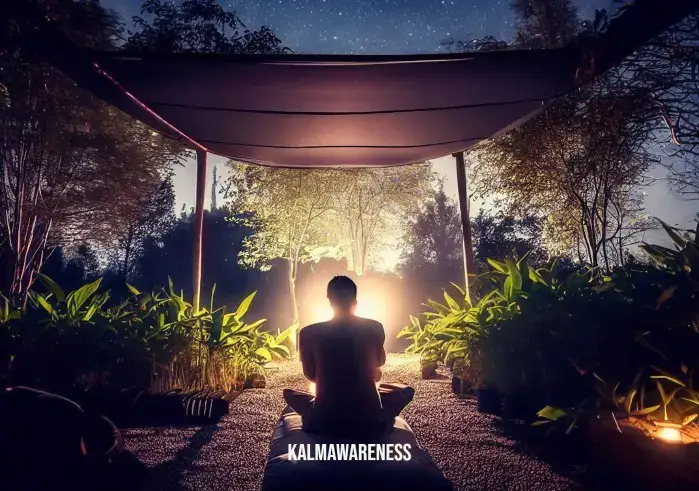
Exploring Advanced Meditation Practices
Deepening Your Meditation Journey
In the previous section, we explored the essence of meditation, various techniques, and the wide-ranging benefits it offers. As you continue to embark on your meditation journey, it’s natural to seek ways to deepen your practice and explore more advanced methods. In this chapter, we will dive into advanced meditation practices, uncover the significance of chakras in meditation, and discover how movement can complement and enhance your meditation experience.
Advanced Meditation Techniques
As you progress on your meditation path, you may find yourself drawn to more intricate and profound techniques. Here are a few advanced practices to consider incorporating into your meditation routine:
- Transcendental Meditation: Transcendental Meditation, often referred to as TM, is a technique that involves the use of a mantra—a specific sound, word, or phrase—to focus the mind and attain a state of deep relaxation and inner stillness. TM is known for its simplicity and effectiveness in quieting the mind. It has been associated with various benefits, including stress reduction and increased creativity. To learn more about this technique, visit our article on transcendental meditation and explore how it can elevate your practice.
- Vipassana Meditation: Vipassana, which means “insight” in Pali, is a traditional meditation practice that involves observing the sensations and experiences arising within the body and mind. It cultivates mindfulness, deep self-awareness, and insight into the nature of reality. Vipassana meditation is often practiced in silent retreats, allowing practitioners to delve into a profound exploration of their inner landscape. Discover more about Vipassana meditation in our article on Vipassana retreats and uncover the transformative potential of this practice.
- Kundalini Meditation: Kundalini meditation focuses on awakening and channeling the dormant spiritual energy, known as Kundalini, that resides at the base of the spine. Through specific breathing techniques, postures, and mantras, practitioners aim to awaken this energy and allow it to rise through the chakras, leading to heightened states of consciousness and spiritual growth. To learn more about Kundalini meditation and its practice, visit our article on Kundalini awakening and explore the profound effects it can have on your journey.
The Role of Chakras in Meditation
Chakras, the energy centers in our bodies, play a significant role in meditation and energy work. Understanding the chakras and their connection to our physical, emotional, and spiritual well-being can enhance our meditation practice. Here’s a brief overview of the seven main chakras:
- Root Chakra (Muladhara): Located at the base of the spine, the root chakra represents our foundation, stability, and connection to the earth. It is associated with feelings of safety, security, and groundedness. Explore our article on balancing the root chakra to learn how to cultivate a strong foundation for your meditation practice.
- Sacral Chakra (Svadhishthana): The sacral chakra, situated in the lower abdomen, governs our creativity, passion, and emotional well-being. It is linked to our relationships, sensuality, and self-expression. Dive into our article on activating the sacral chakra to discover practices that ignite your creative spark and unleash your inner vitality.
- Solar Plexus Chakra (Manipura): The solar plexus chakra, located in the upper abdomen, is associated with personal power, confidence, and self-esteem. It influences our sense of purpose, motivation, and willpower. Visit our article on balancing the solar plexus chakra to explore techniques that cultivate inner strength and harness your personal power.
- Heart Chakra (Anahata): The heart chakra, positioned at the center of the chest, represents love, compassion, and connection. It governs our relationships, forgiveness, and acceptance. Discover practices to open and heal the heart chakra in our article on nurturing the heart chakra and foster a deep sense of love and connection.
Continue to Part 3: In the next part of our article, we will delve into the relationship between movement and meditation, explore the concept of conscious breathing, and uncover the power of sound in enhancing your meditation practice. Get ready to embark on a transformative exploration of these complementary elements!
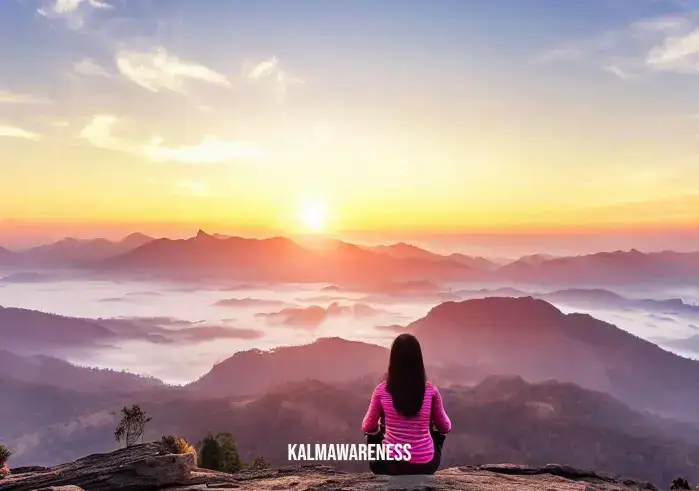
The Synergy of Movement and Meditation
Exploring the Connection
In our previous chapters, we delved into the essence of meditation, various techniques, and the significance of chakras in deepening our practice. Now, let’s embark on a journey that explores the symbiotic relationship between movement and meditation. Movement practices can complement and enhance our meditation experience, bringing a new dimension to our spiritual and physical well-being. In this chapter, we will dive into the profound impact of conscious movement, the art of conscious breathing, and the transformative power of sound in meditation.
The Power of Conscious Movement
Movement can be a gateway to profound presence and self-expression. When combined with meditation, conscious movement practices create a harmonious synergy that integrates mind, body, and spirit. Here are some forms of movement that can enrich your meditation practice:
- Yoga: Yoga, a centuries-old practice, combines physical postures, breath control, and meditation. It cultivates strength, flexibility, and balance while fostering mindfulness and inner calm. Dive into our article on yoga and meditation to explore the deep connection between these transformative practices.
- Tai Chi: Tai Chi is a martial art that blends slow, flowing movements with focused attention and deep breathing. It promotes relaxation, balance, and the flow of vital energy (Qi) throughout the body. Discover the meditative qualities of Tai Chi in our article on Tai Chi and meditation and unlock the harmony of mind and body.
- Dance Meditation: Dance can be a powerful form of moving meditation, allowing us to express our emotions, release tension, and connect with our inner rhythm. Explore the liberating world of dance meditation in our article on meditative dance and experience the joy of embodied mindfulness.
The Art of Conscious Breathing
Breath is the bridge between the body and mind, and conscious breathing techniques can deepen our meditation practice. By intentionally directing our breath, we can access profound states of relaxation and presence. Here are a few breathing practices to explore:
- Diaphragmatic Breathing: Also known as belly breathing, diaphragmatic breathing involves engaging the diaphragm to breathe deeply into the abdomen. It promotes relaxation, reduces stress, and enhances oxygen flow in the body. Learn more about diaphragmatic breathing in our article on breathing techniques and experience its calming effects.
- Alternate Nostril Breathing: Alternate nostril breathing is a yogic technique that balances the flow of energy in the body. By alternating the breath through each nostril, it harmonizes the left and right hemispheres of the brain, inducing a state of calm and mental clarity. Visit our article on pranayama techniques to delve deeper into this transformative breathing practice.
The Transformative Power of Sound
Sound has the ability to transport us to deep states of relaxation and heightened awareness. Incorporating sound into meditation can amplify its effects and facilitate profound healing and transformation. Here are some ways to harness the power of sound:
- Mantra Meditation: Mantras are sacred words or sounds that are repeated during meditation to focus the mind and elevate consciousness. They have been used for centuries as powerful tools for meditation and spiritual growth. Explore our article on mantra meditation to discover the transformative potential of these ancient vibrations.
- Sound Baths: Sound baths involve immersing yourself in the healing sounds of various instruments such as singing bowls, gongs, and chimes. The vibrations of these instruments promote deep relaxation, stress reduction, and energetic balancing. Learn more about sound baths in our article on sound healing and experience the therapeutic power of sound.
Continue to Part 4: In the next part of our article, we will explore practical tips for establishing a consistent meditation practice, delve into the concept of mindfulness in everyday life, and unveil the benefits of group meditation. Get ready to deepen your understanding and refine your meditation journey!
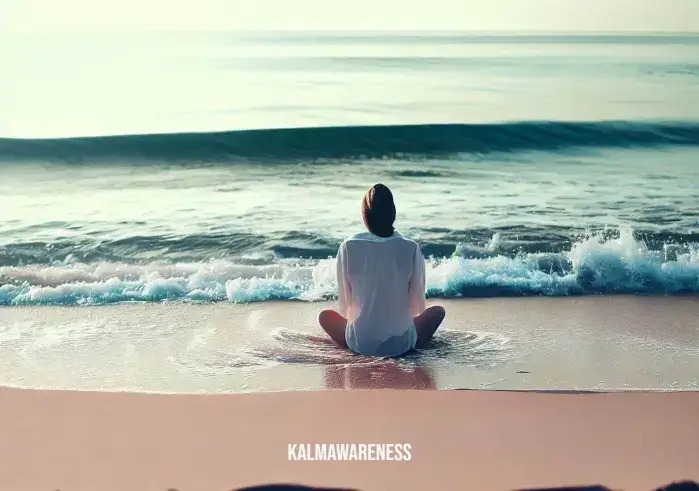
Cultivating a Consistent Meditation Practice
Nurturing Your Meditation Journey
In the previous chapters, we explored the synergy of movement and meditation, the power of conscious breathing, and the transformative effects of sound in our practice. Now, let’s delve into the practical aspects of establishing a consistent meditation routine, incorporating mindfulness into everyday life, and the benefits of group meditation. By nurturing these elements, we can enrich our meditation journey and experience profound growth on our path of self-discovery.
Establishing a Consistent Meditation Routine
Consistency is key when it comes to meditation. By setting aside dedicated time for practice, we create a nurturing space for inner exploration and transformation. Here are some tips to help you establish a consistent meditation routine:
- Create a Sacred Space: Designate a quiet and peaceful corner of your home as your meditation space. Decorate it with items that inspire tranquility, such as candles, cushions, or spiritual symbols. Having a dedicated space can enhance focus and create a sense of ritual around your practice.
- Choose a Regular Time: Find a time of day that works best for you and commit to meditating at that time consistently. Whether it’s early morning, during lunch breaks, or in the evening, having a regular meditation schedule helps to integrate it into your daily routine.
- Start Small: If you’re new to meditation, begin with shorter sessions, gradually increasing the duration as you become more comfortable. Even a few minutes of daily meditation can yield significant benefits. Visit our article on meditations for beginners to explore practices tailored to newcomers.
- Be Gentle with Yourself: Understand that meditation is a practice, and there will be days when your mind feels restless or your schedule gets hectic. Be compassionate with yourself and approach your practice with a non-judgmental attitude. Remember that every moment spent in meditation contributes to your growth.
Mindfulness in Everyday Life
Meditation extends beyond the cushion; it’s about bringing mindfulness into every aspect of our lives. By cultivating present-moment awareness, we can infuse our daily activities with intention, joy, and clarity. Here are ways to incorporate mindfulness into your everyday life:
- Mindful Eating: Pay attention to the flavors, textures, and smells of your food. Slow down and savor each bite, engaging your senses fully. Visit our article on mindful eating to explore techniques that foster a deeper connection with your nourishment.
- Mindful Movement: Whether you’re walking, washing dishes, or doing yoga, bring awareness to the sensations and movements of your body. Allow yourself to fully immerse in the present moment, savoring each movement mindfully.
- Mindful Communication: When engaging in conversations, practice active listening, and give your full attention to the person speaking. Notice your own responses and reactions, cultivating empathy and understanding.
The Power of Group Meditation
Meditating in a group setting can amplify the benefits of individual practice. The collective energy and shared intention create a powerful atmosphere that deepens our experience. Here are a few advantages of group meditation:
- Enhanced Focus: Meditating with a group can support your own focus and concentration. The collective energy can help anchor your attention and deepen your practice.
- Shared Connection: Group meditation fosters a sense of community and connection. It provides an opportunity to share experiences, insights, and challenges with like-minded individuals on the same journey.
- Accountability and Motivation: Being part of a meditation group encourages accountability and motivation. When we commit to a regular group practice, we are more likely to stay dedicated to our own individual practice.
Continue to Part 5: In the final part of our article, we will explore different meditation resources, recommended books, and online platforms to support your meditation journey. Get ready to discover an array of tools and guidance to enhance your practice!
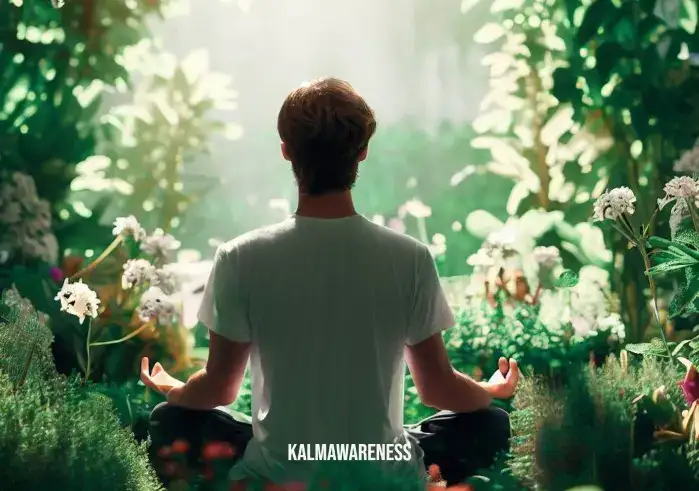
Elevating Your Meditation Practice: Resources and Guidance
Nurturing Your Meditation Journey
In our previous chapters, we explored various aspects of meditation, including the connection between movement and meditation, conscious breathing, mindfulness in everyday life, and the benefits of group meditation. As you continue to deepen your practice, it’s essential to have access to reliable resources and guidance that can support and inspire you along the way. In this final chapter, we will explore different meditation resources, recommended books, and online platforms to elevate your meditation practice.
Meditation Resources
- Meditation Apps: In the digital age, meditation apps have become popular tools for guidance and support. They offer a variety of guided meditations, timers, and features to customize your practice. Explore apps such as Calm and Headspace to access a wealth of meditation resources at your fingertips.
- Online Meditation Communities: Engaging with online meditation communities can provide a sense of connection and shared learning. Participate in forums, discussion boards, or online groups dedicated to meditation. Check out Insight Timer for a community-driven meditation platform with a vast library of guided meditations and courses.
- Meditation Retreats: Embarking on a meditation retreat can offer a profound and immersive experience. It allows you to deepen your practice in a dedicated and supportive environment. Search for retreat centers or organizations that offer meditation retreats in your area or consider joining virtual retreats for the convenience of practicing from home.
Recommended Books on Meditation
- “The Miracle of Mindfulness” by Thich Nhat Hanh: This classic book introduces readers to the transformative power of mindfulness through practical exercises and teachings. Thich Nhat Hanh offers insights and guidance on how to bring mindfulness into everyday activities, enhancing the quality of our lives.
- “Wherever You Go, There You Are” by Jon Kabat-Zinn: Jon Kabat-Zinn, a renowned mindfulness teacher, shares his wisdom on the integration of mindfulness into our daily lives. Through personal anecdotes and guided practices, he invites readers to cultivate present-moment awareness and embrace the fullness of each moment.
- “The Untethered Soul” by Michael A. Singer: This profound book takes readers on a spiritual journey, exploring the nature of consciousness, inner freedom, and transcending limiting beliefs. Michael A. Singer offers insights and practices to help readers connect with their true essence and live a life of expanded awareness.
Online Platforms for Meditation Practice
- Gaia: Gaia is an online platform that offers a wide range of spiritual content, including guided meditations, yoga classes, and conscious documentaries. It provides a diverse collection of teachings and practices from renowned teachers, allowing you to explore various meditation techniques and spiritual traditions.
- YouTube: YouTube is a vast resource for guided meditations and meditation-related content. You can find channels dedicated to meditation, mindfulness, and spiritual growth. Explore channels such as Mooji and The Honest Guys for a rich collection of guided meditations and relaxation music.
- Insight Timer: In addition to its community aspect, Insight Timer offers a comprehensive library of guided meditations, courses, and talks from renowned meditation teachers around the world. It allows you to customize your meditation experience based on your preferences and intentions.
Embrace the Journey
As you explore these resources and immerse yourself in the wisdom of experienced teachers and practitioners, remember that meditation is a personal journey. Embrace the process, be patient with yourself, and allow the practice to unfold naturally. Each moment spent in meditation is an opportunity for self-discovery, inner peace, and profound transformation.
Congratulations on completing our article on meditation and its practice! May your continued meditation journey be filled with clarity, serenity, and deep inner growth.
